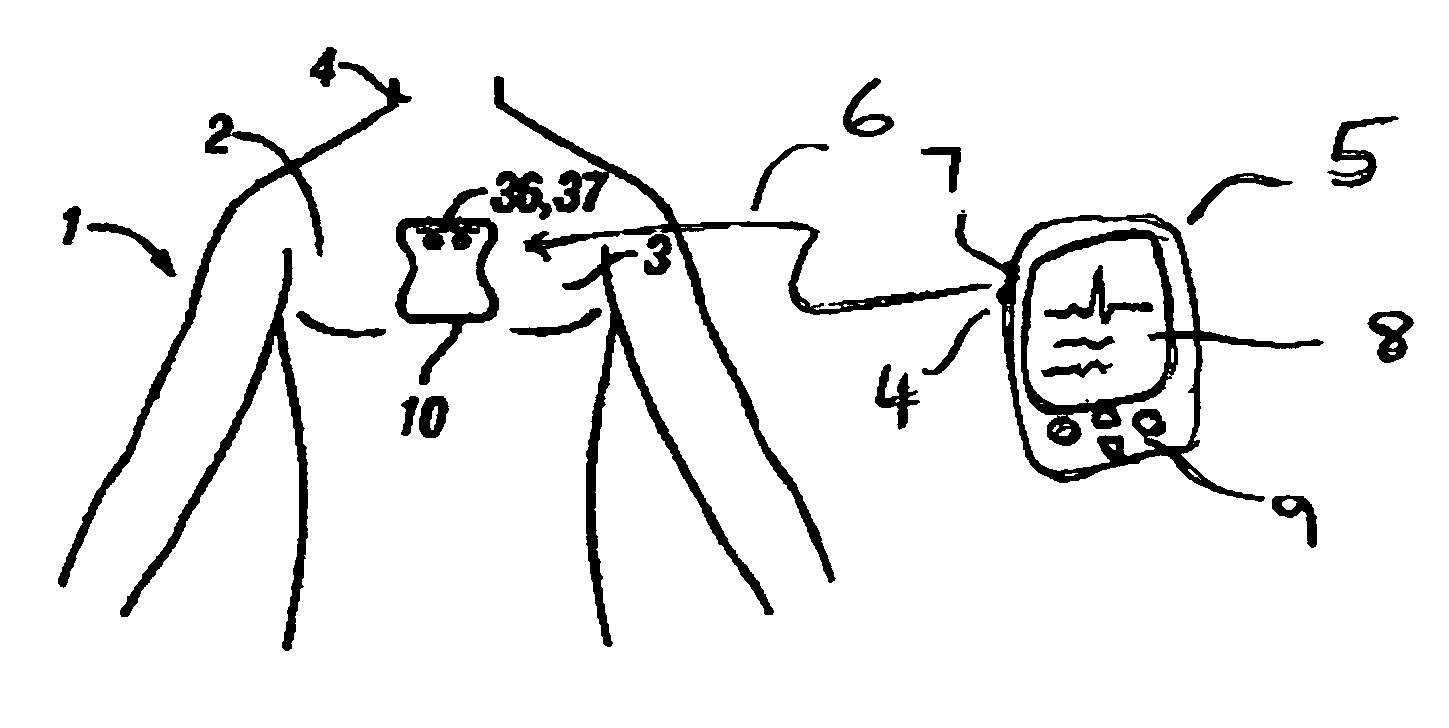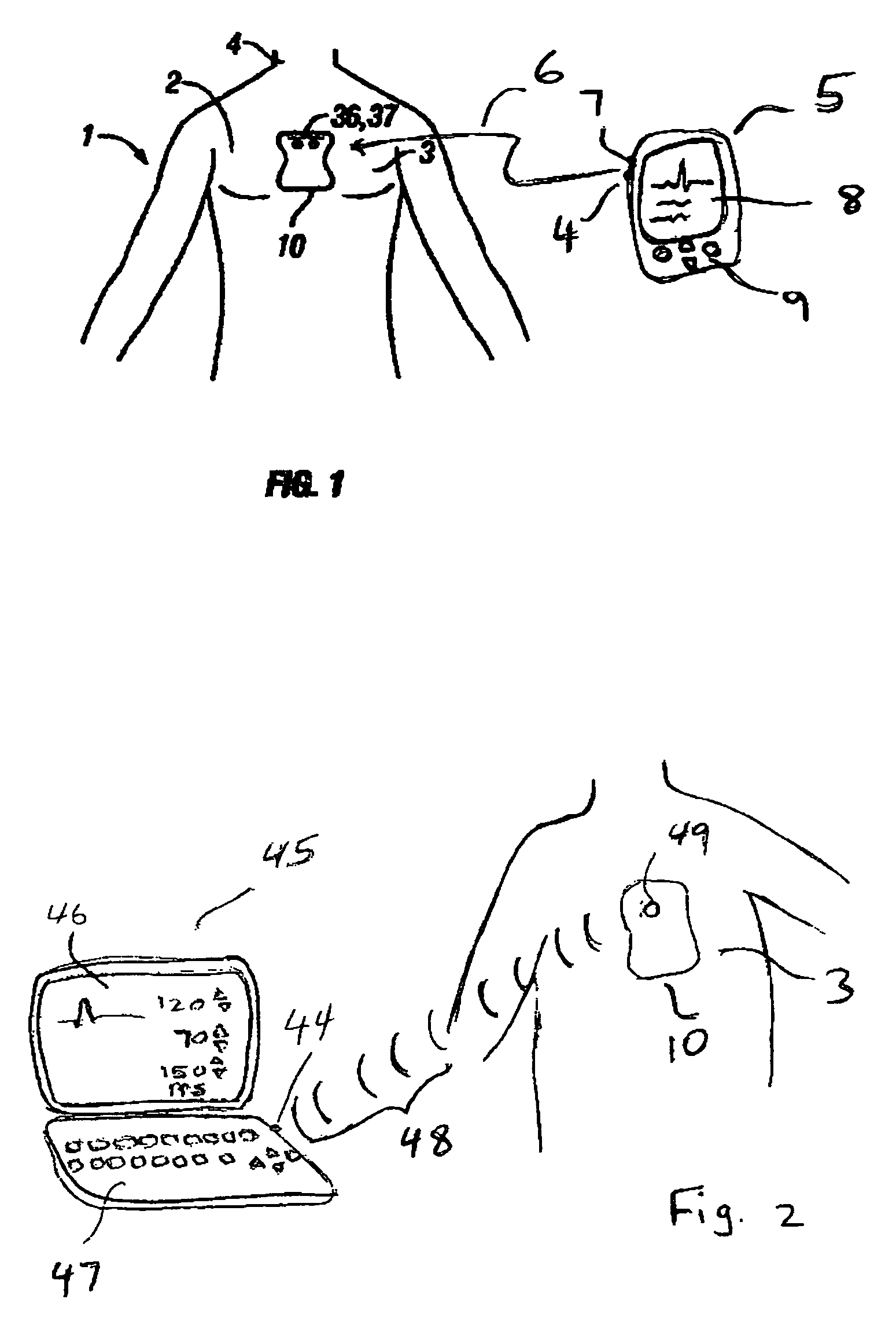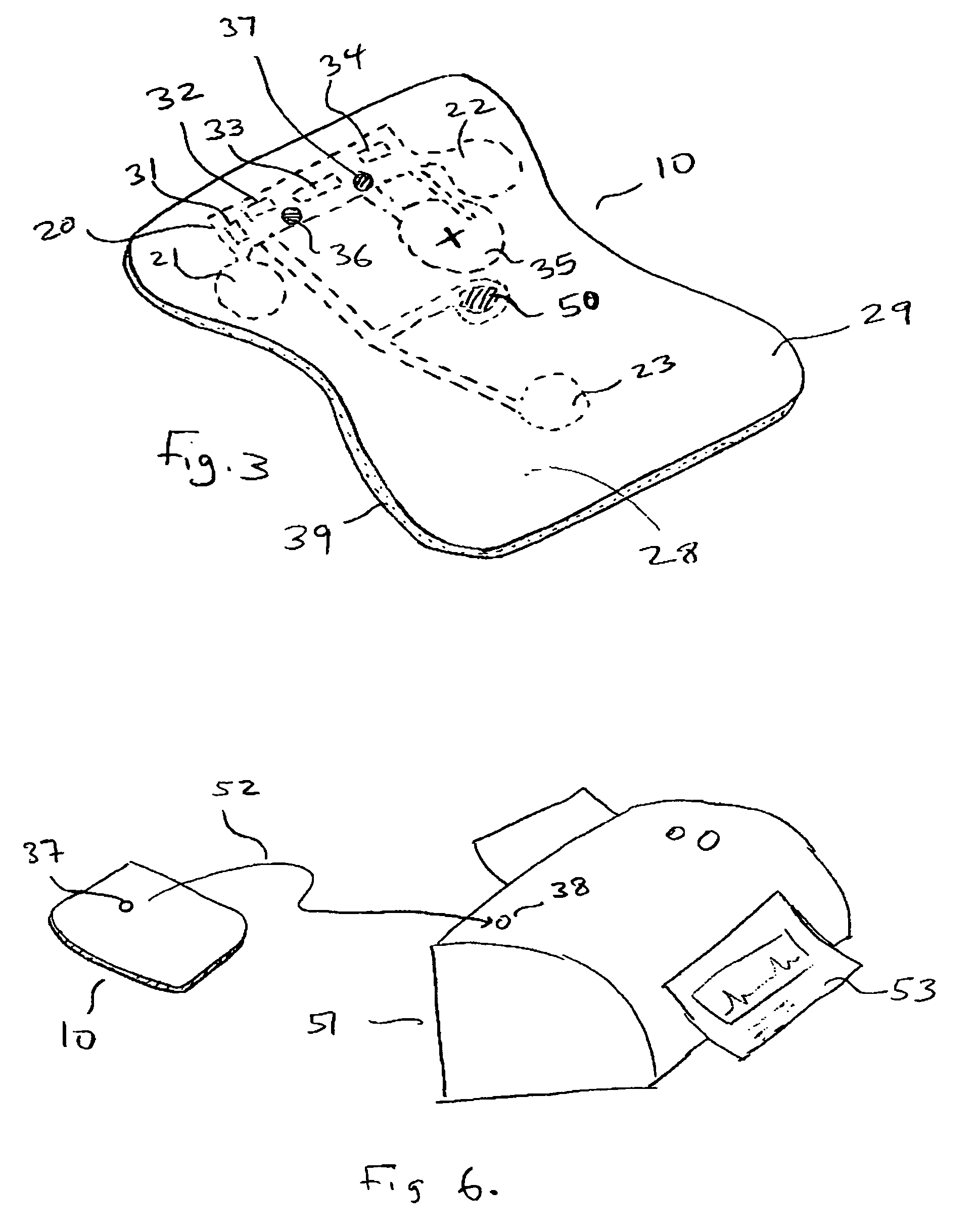Programmable ECG sensor patch
a programmable, sensor patch technology, applied in the field of electrocardiograms, can solve the problems of increased risk of heart attack, increased hospitalization and lower quality of life of survivors, and more damage to the heart, so as to reduce power consumption, prolong monitoring, and reduce the cost of patients.
- Summary
- Abstract
- Description
- Claims
- Application Information
AI Technical Summary
Benefits of technology
Problems solved by technology
Method used
Image
Examples
Embodiment Construction
[0034]The invention, shown in various embodiments of FIGS. 1-6 is a disposable programmable patch for non-invasive detection of ECG risk patterns according to programmed criteria. The patch 10 is thin, flat, and flexible for placement on the upper body of a person whose heart is being examined. The sensor patch relies on surface electrocardiogram (ECG) for detecting changes and trends in the ECG according to the programmed monitoring parameters. An application of particular interest is monitoring the performance of cardioactive drugs and assessing the regimen or safety of the medication. These drugs can be targeted for cardiac disease or non-cardiac ailments with possible cardiac risks. A related application is for obtaining safety and efficacy data for pharmaceutical films seeking regulatory approvals for their new or experimental drugs. Another application is programming heart rate limits for a cardiac patient during stress or exercise. For example, a cardiac patient can be given ...
PUM
 Login to View More
Login to View More Abstract
Description
Claims
Application Information
 Login to View More
Login to View More - R&D
- Intellectual Property
- Life Sciences
- Materials
- Tech Scout
- Unparalleled Data Quality
- Higher Quality Content
- 60% Fewer Hallucinations
Browse by: Latest US Patents, China's latest patents, Technical Efficacy Thesaurus, Application Domain, Technology Topic, Popular Technical Reports.
© 2025 PatSnap. All rights reserved.Legal|Privacy policy|Modern Slavery Act Transparency Statement|Sitemap|About US| Contact US: help@patsnap.com



